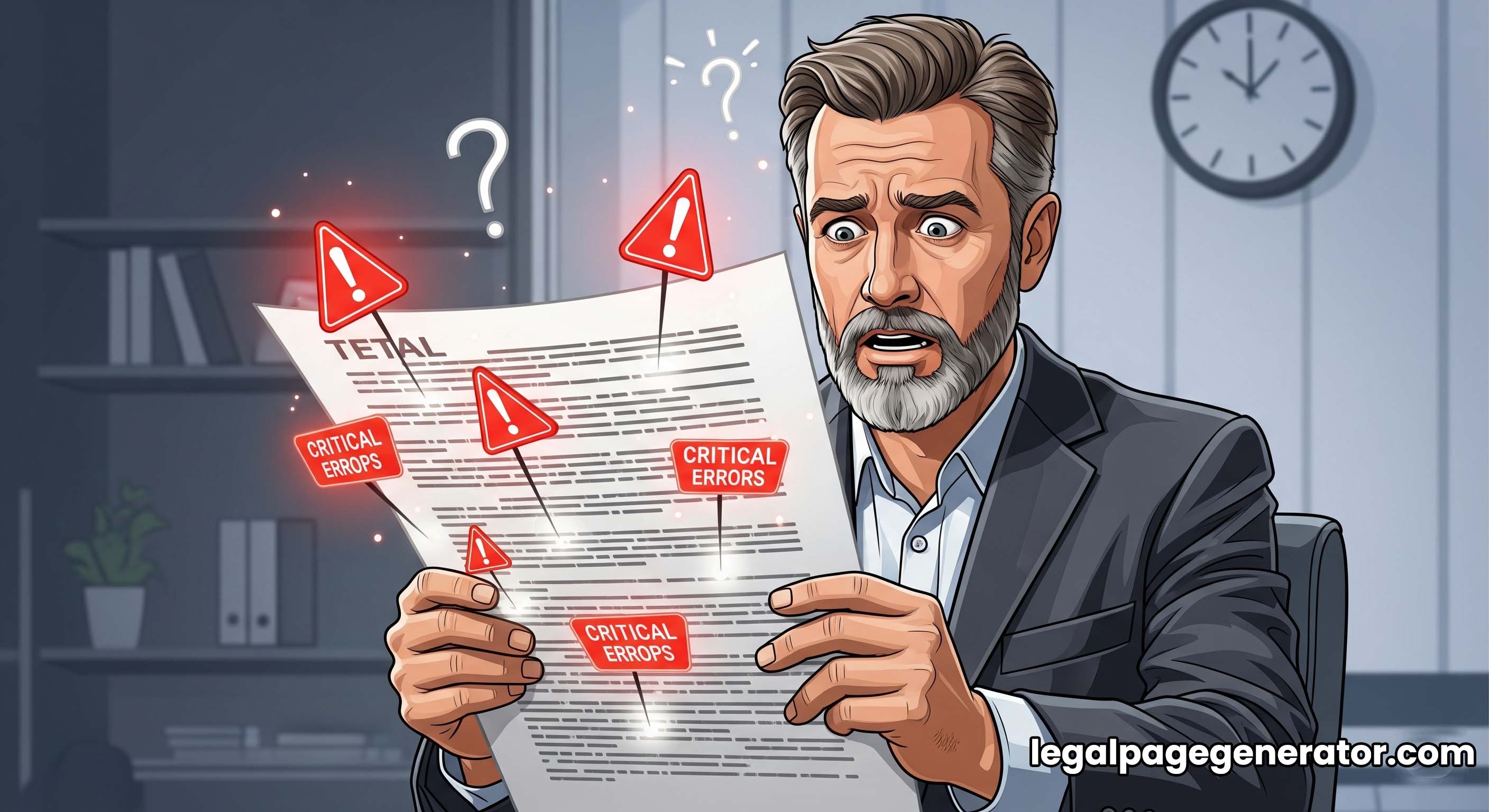Your website's "Terms and Conditions" (T&C) agreement is the rulebook that governs the relationship between you and your users. A well-crafted T&C can protect your intellectual property and limit your liability. A poorly written one, however, can leave you exposed to legal risks.
Many website owners make the same critical errors. Here are five of the most common mistakes to avoid.
Table of Contents
1. Copying and Pasting from Another Website
This is the most dangerous mistake. The T&C you copied was tailored to that specific company's services and jurisdiction. It likely contains clauses that don't apply to you and omits protections that you desperately need. Furthermore, copying it verbatim is a form of plagiarism and can lead to legal action for copyright infringement.
2. Using Vague or Unclear Language
A T&C filled with complex legal jargon is almost as bad as having no T&C at all. If your terms are ambiguous, they can be interpreted against you in a dispute. Your goal should be to write in clear, simple language so that the average user can understand their rights and obligations.
3. Failing to Include a Limitation of Liability Clause
What happens if your website has an error or provides information that leads to a user's loss? Without a "Limitation of Liability" clause, you could be held responsible for significant financial damages. This crucial clause states that you are not liable for any indirect damages arising from the use of your site or services.
4. Forgetting to Reserve the Right to Terminate Accounts
If your website allows user interaction (like comments), you need a clause that gives you the authority to terminate or suspend user accounts. This is your primary tool for managing your community and removing bad actors who may be spamming, harassing others, or violating your rules.
5. Hiding the Agreement or Not Getting Consent
A Terms and Conditions agreement is only legally enforceable if your users have agreed to it. Simply having the page on your website is not enough. You must make users aware of the terms. At a minimum, your T&C should be easily accessible from every page of your site, typically via a link in the footer.
Conclusion
Your Terms and Conditions agreement is a vital asset. By avoiding these common pitfalls, you can create a robust document. To get a head start, use a reliable tool like the Legal Page Generator to create a comprehensive foundation that you can tailor to your specific needs.
